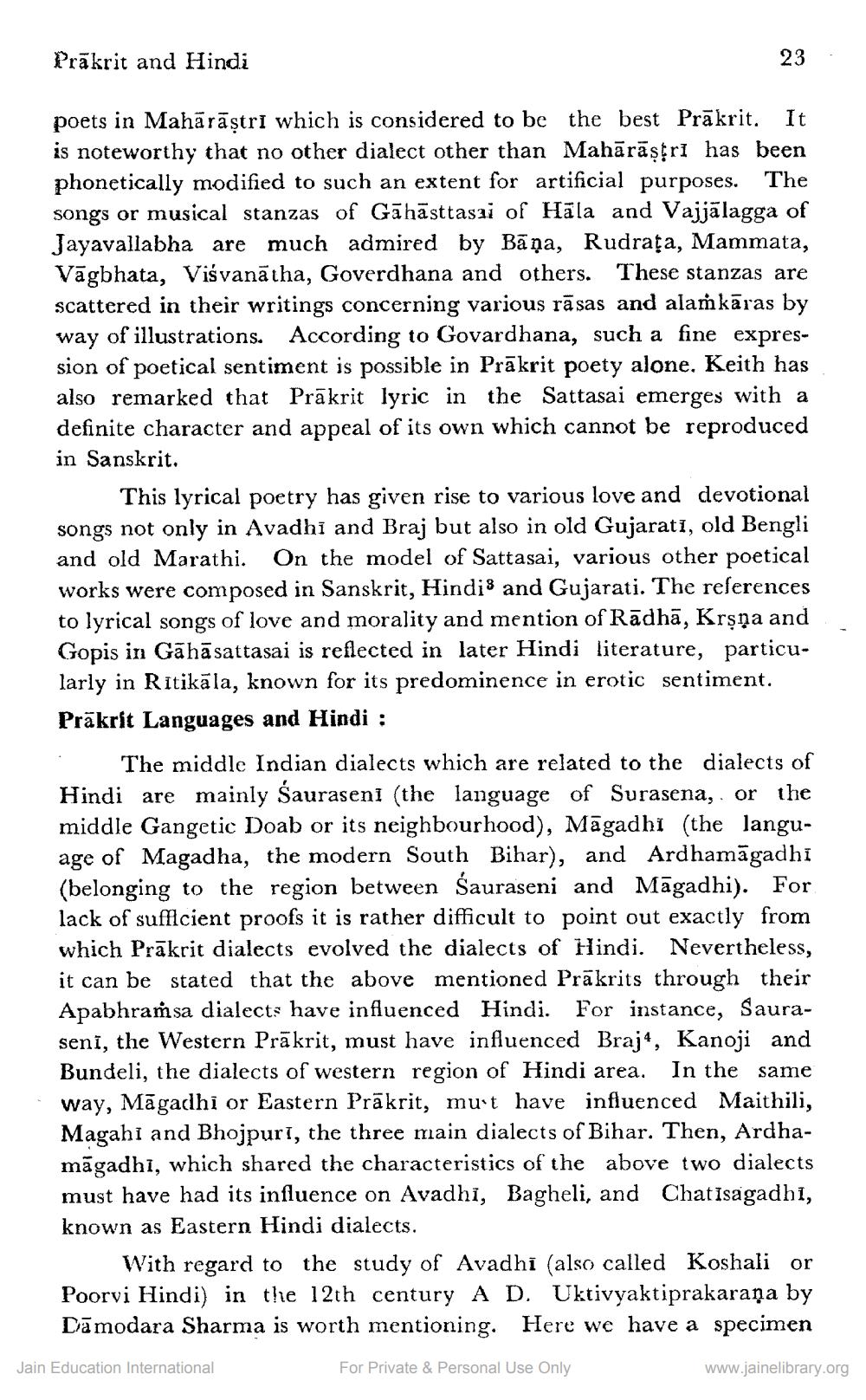________________
Prākrit and Hindi
23.
poets in Mahārāștri which is considered to be the best Prākrit. It is noteworthy that no other dialect other than Mahārāştri has been phonetically modified to such an extent for artificial purposes. The songs or musical stanzas of Gā hāsttasai of Hāla and Vajjālagga of Jayavallabha are much admired by Bāņa, Rudrața, Mammata, Vāgbhata, Viśvanātha, Goverdhana and others. These stanzas are scattered in their writings concerning various rāsas and alamkāras by way of illustrations. According to Govardhana, such a fine expression of poetical sentiment is possible in Prākrit poety alone. Keith has also remarked that Prākrit lyric in the Sattasai emerges with a definite character and appeal of its own which cannot be reproduced in Sanskrit.
This lyrical poetry has given rise to various love and devotional songs not only in Avadhi and Braj but also in old Gujarati, old Bengli and old Marathi. On the model of Sattasai, various other poetical works were composed in Sanskrit, Hindis and Gujarati. The reserences to lyrical songs of love and morality and mention of Rādhā, Krşņa and Gopis in Gāhāsattasai is reflected in later Hindi literature, particularly in Ritikāla, known for its predominence in erotic sentiment. Prākrit Languages and Hindi :
The middle Indian dialects which are related to the dialects of Hindi are mainly Sauraseni (the language of Surasena, or the middle Gangetic Doab or its neighbourhood), Magadhi (the language of Magadha, the modern South Bihar), and Ardhamāgadhi (belonging to the region between sauraseni and Māgadhi). For lack of sufficient proofs it is rather difficult to point out exactly from which Prākrit dialects evolved the dialects of Hindi. Nevertheless, it can be stated that the above mentioned Prakrits through their Apabhraṁsa dialects have influenced Hindi. For instance, Saurasenī, the Western Prākrit, must have influenced Braj4, Kanoji and Bundeli, the dialects of western region of Hindi area. In the same way, Māgadhi or Eastern Prākrit, must have influenced Maithili, Magahi and Bhojpuri, the three main dialects of Bihar. Then, Ardhamāgadhi, which shared the characteristics of the above two dialects must have had its influence on Avadhi, Bagheli, and Chat isagadhi, known as Eastern Hindi dialects.
With regard to the study of Avadhi (also called Koshali or Poorvi Hindi) in the 12th century AD. Uktivyaktiprakaraņa by
Damodara Sharma is worth mentioning. Here we have a specimen Jain Education International For Private & Personal Use Only
www.jainelibrary.org




